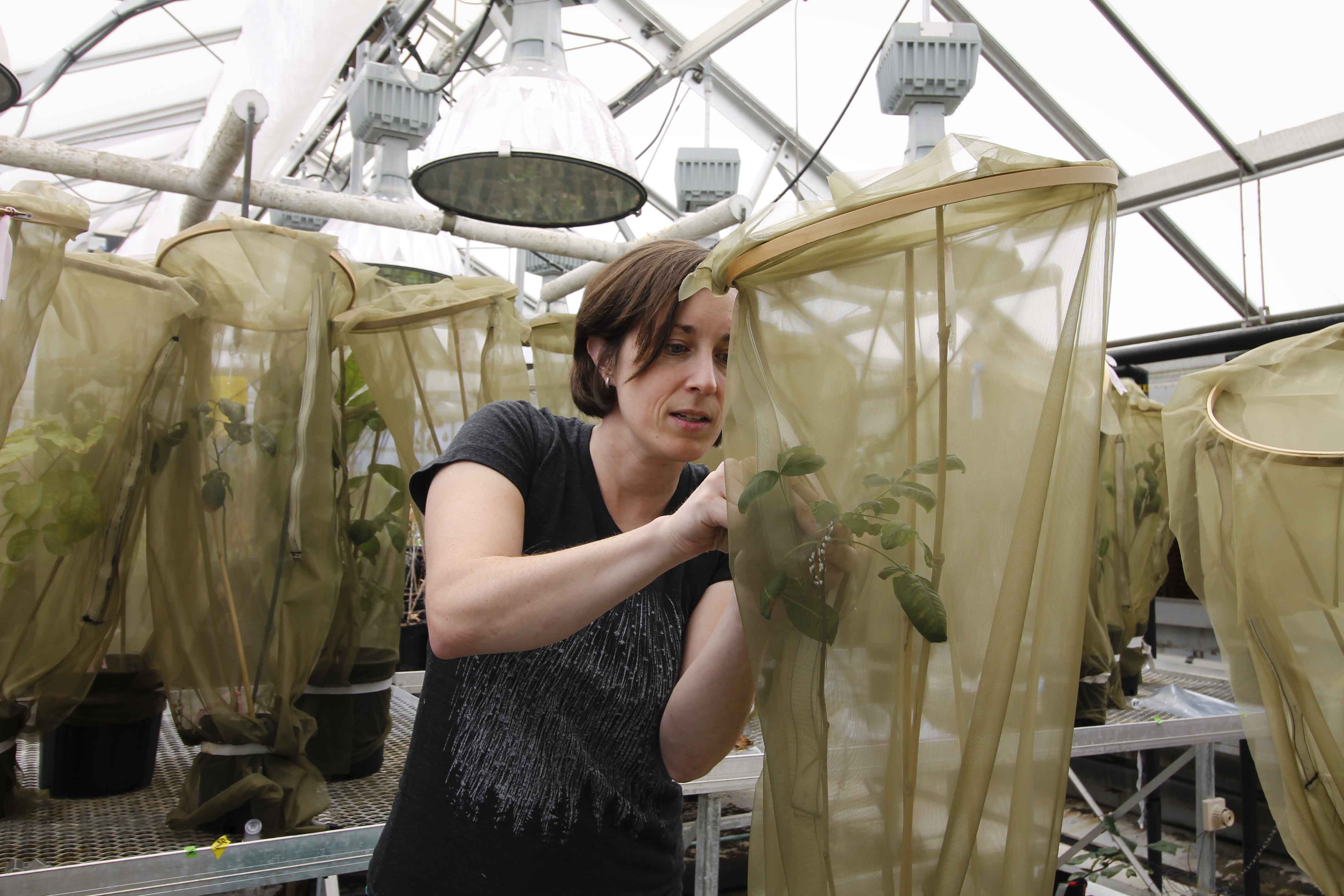Despite Temperature Shifts, Treehoppers Manage to Mate
Carrie Bebermeyer
Public Relations Director
carrie.bebermeyer@slu.edu
314-977-8015
Reserved for members of the media.
During the mating season, male treehoppers — small plant feeding insects — serenade potential mates with vibrational songs sent through plant stems. If a female treehopper’s interest is sparked, a male-female duet ensues until mating occurs.
Scientists know that there is a thermal window when the half-centimeter-long insects are active and temperature shifts can throw this delicate coordination off. For example, the songs produced by males to attract mates vary with temperature. At some temperatures, male treehoppers can even sound like different species, potentially confusing females, as female treehoppers use these songs to pick a good mate.
A Saint Louis University research team wanted to know if temperature variation, which
is increasing with global warming, could have a disruptive effect on the insects’
reproduction.
To find out, the team studied how temperature variation affects male vibrational
songs and female preferences for these songs in an experiment recently published in
The Journal of Evolutionary Biology.
Led by Kasey Fowler-Finn, Ph.D., assistant professor of biology at Saint Louis University, the team tested four groups
of Enchenopa binotata treehoppers, each from a different location. They measured the frequency (i.e. pitch)
of male vibrational songs and the frequency most preferred by females across a range
of temperatures from 18 to 36 degrees Celsius.
The results showed a strong temperature effect on both male signals and female preferences with changes in male signals across temperatures being matched by similar changes in the songs that females prefer. Because the male and female insects responded to temperature shifts together, changes in temperature did not significantly influence predicted patterns of female mate choice. Thus, it seems unlikely that thermal sensitivity in male songs will disrupt mating as temperatures shift.
Fowler-Finn is encouraged by the treehoppers’ resilience.
“At a time when we are increasingly concerned about how global warming will influence animals, these findings provide some hope that treehoppers will persist in the face of change.”
In addition to their research on global warming’s potential impact to insects and ecosystems, the study team also is partnering with the Saint Louis University Museum of Art (SLUMA) to help educate the public about the vital role and fascinating attributes of vibrationally singing insects through a sound installation exhibit open to the public that will open October 25.
Other researchers on the paper include Dowen Mae I. Jocson, Morgan E. Smeester, Noah
T. Leith and Anthony Macchiano.
The study was funded by the National Science Foundation (grant number IOS -1656818.)
The paper’s digital object identifier is: https://doi.org/10.1111/jeb.13506
Key Takeaways
- Male treehoppers serenade potential mates with vibrational songs sent through plant stems and if female treehoppers’ interest is sparked, male-female duets ensue until mating occurs.
- A Saint Louis University research team wanted to know if temperature variation, as is increasing with global warming, could disrupt the insects’ reproduction due to its effects on male songs.
- The research team tested four groups of Enchenopa binotata treehoppers, measuring the frequency of male signals and the frequency most preferred by females across a range of temperatures from 18 to 36 degrees Celsius.
- Though the results showed a strong temperature effect on both male signals and female preferences, changes in male signals across temperatures were matched by changes in female preferences. Because the male and female insects both responded to temperature shifts together, changes in temperature did not significantly influence female mate choice or disrupt mating.
Saint Louis University is a Catholic, Jesuit institution that values academic excellence, life-changing research, compassionate health care, and a strong commitment to faith and service. Founded in 1818, the University fosters the intellectual and character development of more than 13,500 students on campuses in St. Louis and Madrid, Spain. Building on a legacy of nearly 200 years, Saint Louis University continues to move forward with an unwavering commitment to a higher purpose, a greater good.


















